Zereshk Polo ba Morgh is a Farsi term that means "Barberry Rice with Chicken". This classic and popular Persian dish has tender and juicy chicken (morgh) that is cooked in tomato and saffron sauce. The chicken is served with fluffy steamed rice (polo) topped with tangy, ruby-red barberries (zereshk).
Don't let the unique-sounding name and description intimidate you. This dish is simple to make, and its layered flavors are sure to win over even the most skeptical eaters.
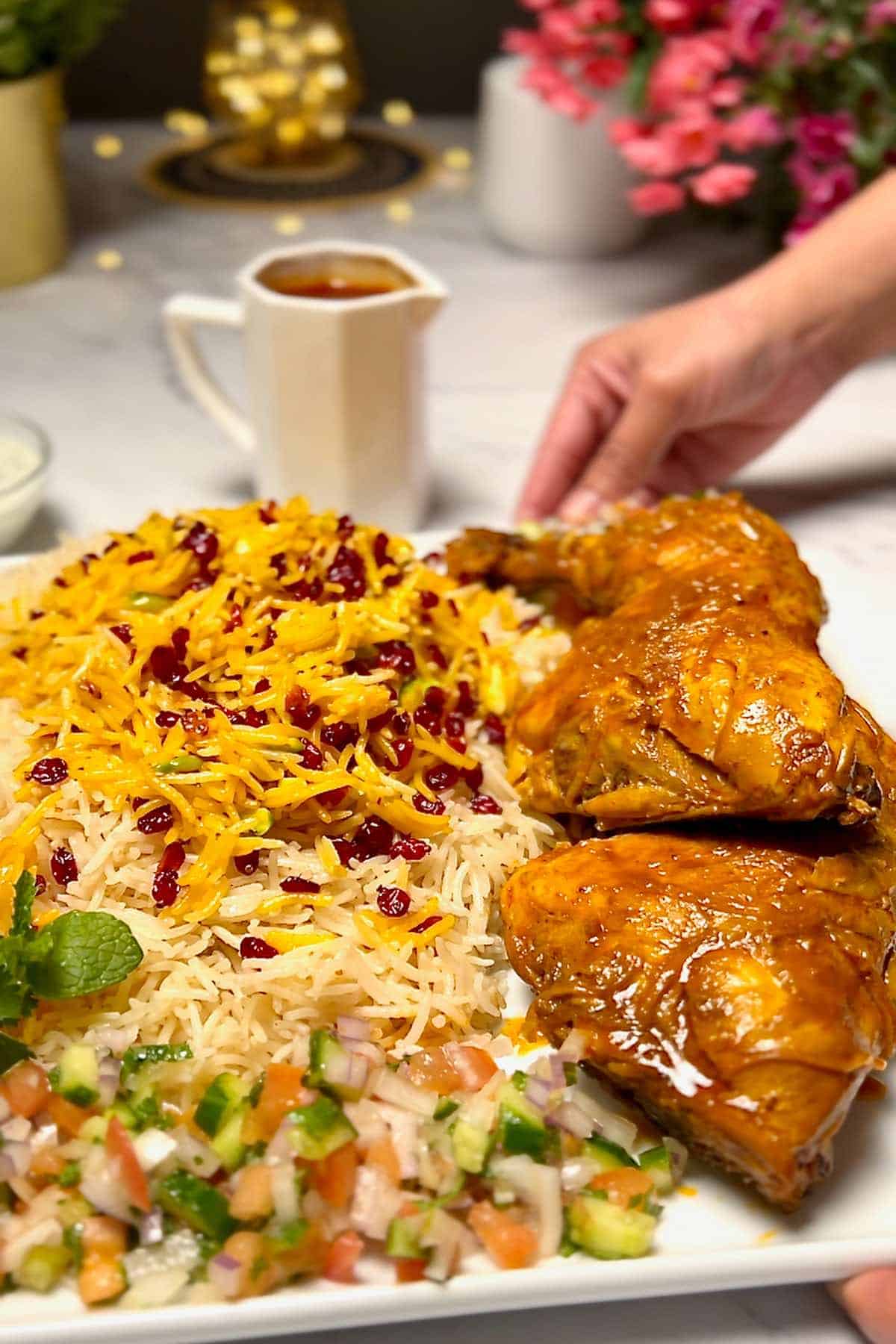
It's no wonder Zereshk Polo ba Morgh is a favorite dish in Iran. It is served at everything from intimate gatherings to grand celebrations like weddings. Iranians also make it for the celebration of the Persian New Year, known as Nowruz.
By the way, if you're looking for simpler rice recipes to serve as sides, check out my buttered basmati rice and lemon dill rice recipes.
Jump to:
- Why is This Persian Dish So Good
- What is Zereshk
- Ingredients You Need
- Instructions (Step-by-Step Photos)
- Tahdig in Zereshk Polo ba Morgh
- Chicken: To Skin or Not to Skin?
- Preparing and Blooming Saffron
- Adding Your Twist to the Dish - Creative Ideas
- Top Tips
- Frequently Asked Questions (FAQs)
- Serving Ideas for Zereshk Polo ba Morgh
- Leftovers and Storage
- Recipe
- Reviews
Why is This Persian Dish So Good
- Great introduction to Persian food: Zereshk Polo ba Morgh is a good first Persian/Iranian dish to try. It has traditional flavors. Plus, it is not spicy or overwhelming, making it a good starting point. The recipe is straightforward and easy to follow.
- Unique but lovely taste: The combination of tart barberries, saffron rice, and juicy chicken makes for a distinct and unforgettable taste.
- Crowd-pleaser: This is a dish that is sure to impress guests, making it a great choice for dinner parties or gatherings.
- Comfort food: The aromatic rice and tender chicken create a comforting and satisfying dish that can be enjoyed any time of the year.
What is Zereshk
Zereshk (pronounced "zehr-eshk," with an emphasis on the first syllable) is the Farsi name for dried barberries. Barberries are small, tart, and red berries that grow on the barberry shrub (Berberis vulgaris).
It is a popular ingredient in Iranian/Persian cuisine and is commonly used in dishes such as rice polo/pilaf, salads, stews, and meatballs.
In Iran, zereshk is primarily grown in the northeastern region of Khorasan. The common varieties of barberries include "khoshk-e shirin" which is sweet and dry, and "pofaki" which is tart and juicy. Another variety is "anari," which is a large, sweet, and sour berry that is often used for making jams and preserves.
In addition to its culinary uses, zereshk is believed to have several health benefits, including antioxidant properties and potential anti-inflammatory effects.
Zereshk Polo
This is a Persian rice dish that is made with rice, barberries (zereshk), and saffron and is usually served with chicken, lamb, or beef.
The recipe I'm sharing with you here combines tender and juicy chicken pieces with this barberry rice dish. Zereshk polo is also served with lamb shank (Zereshk Polo ba Mahicheh). The shank is slow-cooked with onions, spices, and tomato paste until it is fall-off-the-bone tender.
Ingredients You Need
Here are some helpful notes on the ingredients you need to make Zereshk Polo ba Morgh. See the recipe card down below for the quantities of these ingredients.
For the Chicken

- Chicken: For a more traditional approach, use bone-in and skinless chicken pieces such as chicken leg quarters, thighs, or drumsticks. But, if you prefer boneless chicken breasts, that will work too. Just keep the pieces slightly larger to prevent them from breaking apart as they simmer in the sauce. If you're unable to find skinless chicken in your local supermarket, you could try checking out Indian, Pakistani, or Middle Eastern stores that sell meat. Alternatively, you can remove the skin yourself by wearing disposable gloves and pulling it off with your hands. It's important to ensure that the chicken is completely thawed before cooking. Oh, and pat it dry. Otherwise, there may be an intense oil splatter while searing the chicken.
- Saffron: Saffron is super important for making Zereshk Polo ba Morgh. It's used in the chicken sauce as well as the rice. No other ingredient can substitute for its unique flavor. Some recipes suggest using turmeric for color, but it tastes very different from saffron. Good saffron can be expensive, but it's worth it for the best taste. You might be able to find saffron at Costco or big stores, but it's commonly sold in Middle Eastern stores.
- Onion: You can use either red or white onions for this recipe. While sliced onions are my preference, finely chopped onions will work just as well.
- Garlic: Use finely chopped or minced garlic for the sauce. Fresh garlic is always better.
- Lemon: You will need some lemon juice for the sauce. If you have fresh limes on hand, you can use those too.
- Tomato Paste: Not to be confused with tomato sauce. Some tomato pastes are heavily salted. If you're unsure about the salt content in the paste, it's best to use half the amount of salt mentioned in the recipe. You can always adjust the salt at the end of the cooking process to taste.
- Olive oil: Olive oil is a healthy choice. But you can use any cooking oil of your choice.
- Spices for cooking chicken:
- ground cinnamon
- ground nutmeg
- ground black pepper
- turmeric
- ground coriander
- ground cumin
- paprika (or cayenne if you prefer some heat)
- salt
For Preparing Rice
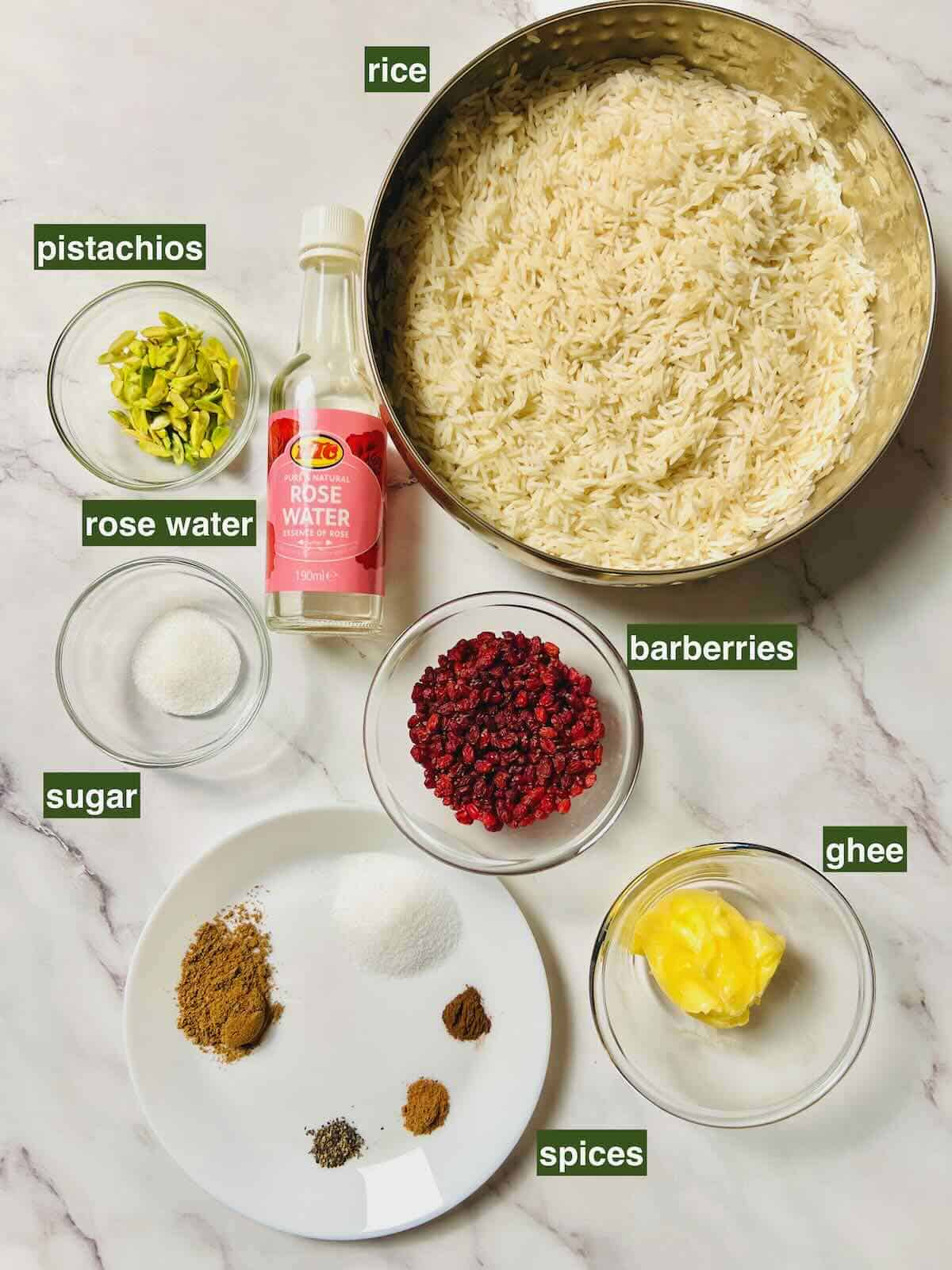
- Barberries (Zereshk): Dried barberries are sold in most Iranian and Middle Eastern stores. If you've not heard of them before, here is a little intro. If you can't find barberries, you can try substituting them with dried cranberries or currants, but the taste won't be the same.
- Rice: Use Basmati Sella rice or parboiled long-grain rice. Sella rice is a type of parboiled rice that is firmer than regular white rice, making it more forgiving if overcooked. If you can't find Basmati Sella, look for any white rice labeled as 'parboiled long grain rice.' You can use any other plain white rice variety as well, including regular Basmati, but be careful as you may end up with mushy rice if you make any mistakes.
- Rose Water: Food-grade rose water is commonly available in Middle Eastern, Pakistani, Persian, and Indian grocery shops. You may also find it in your local supermarket's international aisle/section. Buying online from Amazon is always an option.
- Pistachios: Slivered pistachios can also be found in Middle Eastern stores. While it's possible to prepare them at home by soaking, peeling, and slicing whole dried pistachios, it can be a time-consuming process. If you can't find slivered pistachios, don't worry - you can simply skip them or use other chopped nuts like almonds, walnuts, or pine nuts as substitutes.
- Ghee: Ghee is an excellent ingredient here that adds both aroma and flavor to the rice, but cooking oil or butter can also be used as alternatives.
- Sugar: When it comes to sugar, some recipes call for a generous amount to balance the tartness of the barberries. I prefer to keep the sugar quantity low as I enjoy the natural taste of dried barberries.
- Spices for Rice:
- ground cinnamon
- ground nutmeg
- ground black pepper
- ground cumin
- salt
Instructions (Step-by-Step Photos)
To make this yummy chicken and barberry rice dish, follow these easy, photo-assisted instructions. Be sure to check out the recipe card below for the printable version of this recipe, which includes detailed instructions and all the important recipe notes.
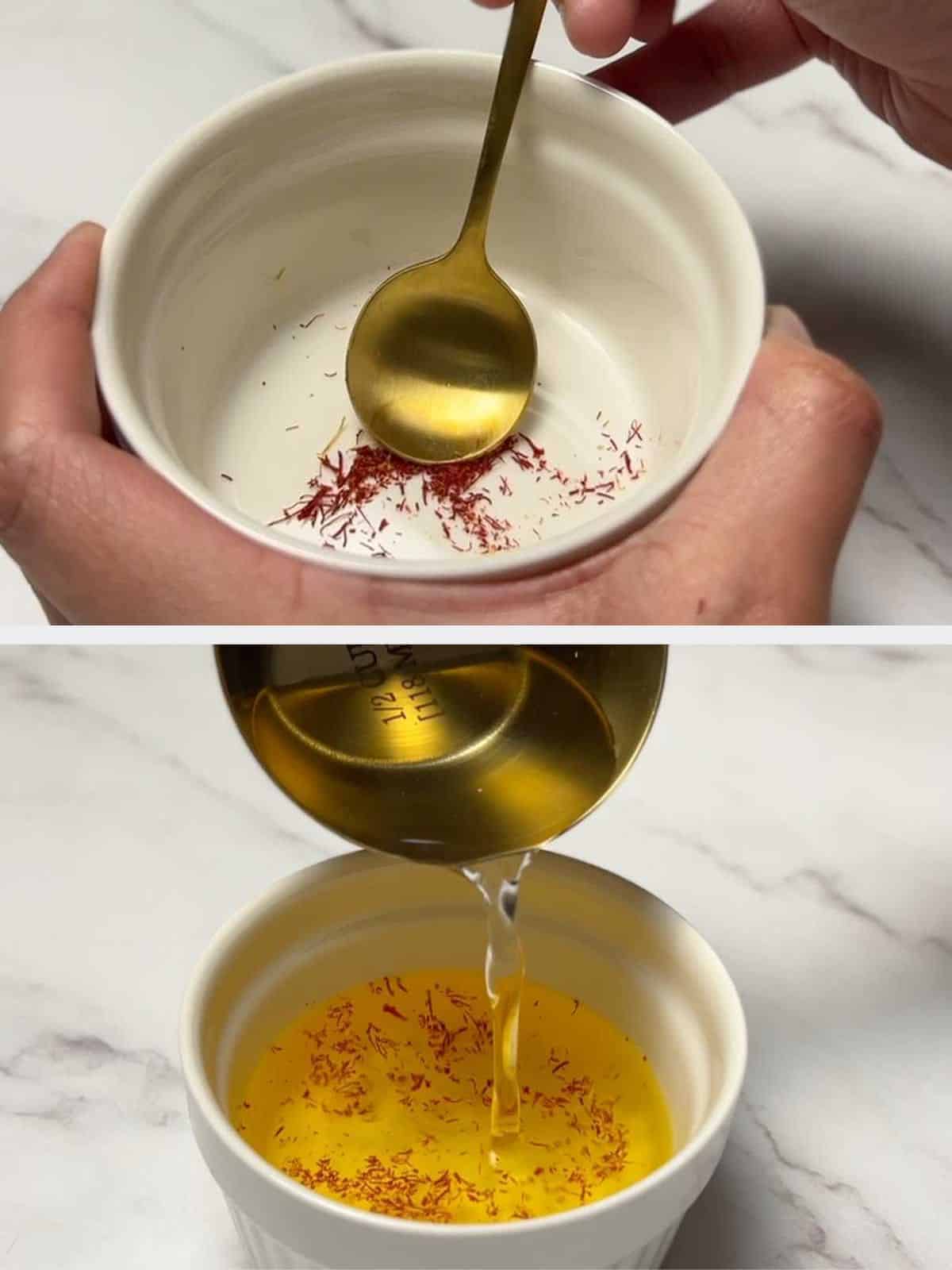
Grind saffron threads using a mortar and pestle or crush them in a small bowl with the back of a spoon. Add warm water and let it sit for at least 15 minutes. This saffron water is used in the chicken sauce and the barberry rice topping.

Cooking the Chicken
Heat oil in a wide pan over medium heat. Add chicken and cook for 4-5 minutes on each side until slightly browned. Remove the chicken from the pan.

In the same pan, cook sliced onions over medium heat until they become soft and translucent. Add minced garlic and cook for an additional 2 minutes. Then, stir in the chicken spice mix and cook for 1 minute to roast the spices.

Add the tomato paste and cook for another minute. Then, pour in water and bring it to a boil.

Add the chicken back to the pan and let it simmer on medium-low heat for 45-50 minutes, flipping halfway through. Increase the heat briefly if the sauce is too watery. Finally, add saffron water and lemon juice, then turn off the heat to finish.

Making the Rice
To a large pot, add ghee, water, rose water, and the prepared spice mix for barberry rice. Bring the water to a boil over high heat. Add the soaked and drained rice and gently mix. Cover the pot with a lid and cook on high heat until 70% of the water has evaporated (6-9 minutes). If foam and bubbles start to spill out of the pot, briefly remove the lid and then put it back.

To check if you are ready for the next step, remove the lid and look for a very thin layer of water bubbling over the surface (as seen in the photo above).
Gently mix the rice and cover the pot with the lid again. Set the heat to the lowest setting and let the rice steam for 15 minutes.
After 15 minutes, turn off the heat. Then let the rice rest with the lid on for another 15 minutes. Do not remove the pot from the hot cooktop.
Important: Don't be tempted to open the lid during the steaming and resting time.
After the resting time, gently fluff the rice using a fork.
This is a shortcut method for cooking rice and doesn't involve making tahdig, the traditional crispy rice layer on the bottom of the pan. For tahdig, please see the notes in the recipe card below.

Making the Barberry Rice Topping
In a pan, heat olive oil over low heat. Add zereshk (barberries) and stir continuously for 2 minutes on low heat, being careful not to burn the berries. Add sugar and saffron water, and cook for an additional minute. Turn off the heat.

Take approximately 1 cup of cooked rice from the pot and add it to the pan with the barberries. Be gentle to avoid breaking or mushing the rice. Optionally, add the slivered pistachios. Gently mix everything together, and you'll notice the rice turning yellow from the saffron water. Continue until all the rice in the pan is yellow.

Assemble
Transfer the cooked white rice from the pot to a large serving dish. Top it with the golden-yellow barberry rice. Place the cooked chicken on the corners of the serving dish or on a separate plate.
Serve the chicken sauce separately in a bowl so that everyone can adjust the amount of sauce according to their preference. Enjoy!
Tahdig in Zereshk Polo ba Morgh
Tahdig is a crispy and golden layer of rice that develops at the bottom of the pot when cooking Persian rice dishes. The Farsi word "tahdig" literally translates to "bottom of the pot." While typically made with rice, it can also be prepared using other ingredients such as potatoes or lavash bread.
Creating the perfect tahdig requires skill and experience. And it can add around 45 to 60 minutes to the overall cooking time. So to make the dish more accessible and easier to prepare, some Zereshk Polo ba Morgh recipes exclude tahdig (as does mine).
However, for those who wish to create the traditional crispy layer, I have included a tahdig version in the recipe card below.
Chicken: To Skin or Not to Skin?
Traditional versions of this dish usually include skinless, bone-in chicken thighs, legs, or boneless breasts.
However, some modern versions suggest leaving the skin on the chicken to enhance its juiciness and flavor.
Ultimately, it's up to your preference whether to leave the skin on or remove it. I prefer to remove the skin since I don't like its texture when it's not crispy.
Preparing and Blooming Saffron
Saffron is a key ingredient in Persian cuisine and provides Zereshk Polo ba Morgh its signature golden color and distinctive flavor.
To use saffron in the recipe, it must first be bloomed, which involves soaking it in warm water for at least 15 minutes to release its flavor and color. However, it's important to grind the saffron before soaking it to get the most out of this expensive spice.
Using a mortar and pestle is a common method for grinding saffron, but if you don't have one, you can place the saffron threads in a small bowl and use the back of a spoon to crush them.
Adding Your Twist to the Dish - Creative Ideas
The traditional recipe for Zereshk Polo ba Morgh is already great, but it's always fun to get creative with food. If you're feeling adventurous, here are a few ways to switch things up:
- Swap the protein: While chicken is the traditional protein in this dish (it's even in the dish's name), you can use other meats such as lamb, beef, or even fish. However, be careful with the cooking times as they will vary for different meats. Vegetarians can use tofu or chickpeas as a plant-based option.
- Use different grains: Although white rice is the most commonly used grain for this dish, you can experiment with other grains such as quinoa, bulgur, or couscous.
- Add caramelized onions: Caramelized onions are a popular addition to many Persian rice dishes. Slice onions thinly and cook them in a little oil over low heat until they turn a deep brown color. Mix them into the rice just before serving.
- Use different types of nuts: While this recipe calls for slivered pistachios, you can experiment with different types of nuts to add more flavor and texture. Some popular options include almonds, walnuts, and pine nuts.
Top Tips
- Rinse the rice thoroughly: Place the rice in a bowl, fill it with water, swirl gently with your hands, and drain using a sieve/strainer. Repeat until the water runs clear (around 3 times). This will help remove excess starch and prevent the rice from becoming too sticky.
- Soak the rice: Soaking rice before cooking is crucial as it allows the grains to evenly absorb water and softens the outer layer, resulting in a fluffier texture. Soak the rice in room temperature water for 30 minutes (plain Basmati rice) or 2 hours (Basmati Sella or long-grain parboiled rice). Using sella or parboiled rice is the preferred choice for this dish due to its superior texture and ability to hold up against overcooking.
- Use good quality saffron: Saffron is a key ingredient in this dish, so make sure you use high-quality saffron threads for the best flavor and color.
- Don't skip the barberries: Barberries are the heart of this dish and add a unique tangy sweetness. So find them and use them, if you can. If you can't find barberries, you can substitute them with dried cranberries or currants, but the flavor won't be the same.
Frequently Asked Questions (FAQs)
To ensure that the rice is properly cooked, taste it. The grains should be tender, but not mushy, and the center should not be hard or uncooked. Resist the urge to open the lid of the rice pot or pan before the recommended cooking and resting time is up. Doing so can cause steam to escape and result in unevenly cooked rice.
While saffron is a crucial ingredient for this dish and cannot be substituted, you can use turmeric (dissolved in water) to achieve a similar golden/yellow color. However, the dish will not taste the same.
Yes, you can add other vegetables to this dish. Some common additions include sliced carrots and bell peppers. Keep in mind that the cooking time may vary depending on the vegetables you add, so adjust accordingly.
Serving Ideas for Zereshk Polo ba Morgh
No Persian/Iranian feast is complete without the perfect sides to complement your main dish. Here are some delicious Persian sides that pair perfectly with this amazing chicken and rice dish:
- Shirazi Salad: This is a simple and refreshing Persian salad made with chopped cucumbers, tomatoes, and red onions. You can also add some fresh herbs like parsley and mint. Dress the salad with olive oil, lemon juice, salt, and pepper.
- Mast-o-Khiar: A yogurt and cucumber dip that goes perfectly with rice dishes. To make it, grate some cucumber and mix it with plain yogurt, minced garlic, and a pinch of salt.
- Sabzi Khordan: This is a platter of fresh herbs and vegetables, such as mint, cilantro, radishes, and leafy greens. Simply wash and arrange the herbs and vegetables on a platter and serve alongside the rice.
- Doogh: Not technically a side dish, but a delightful Persian yogurt drink that is commonly served with meals. To make it, mix some plain yogurt, cold water, and dried mint together, whisking until the mixture becomes smooth."
Leftovers and Storage
- Separate the rice and chicken before storing to prevent the chicken from making rice soggy.
- Store the leftovers in airtight containers and refrigerate for up to 2 days.
- To reheat rice, sprinkle some water over it to prevent it from drying out, and warm it in the microwave until heated through.
- Place the chicken in a microwave-safe dish and cover it with a damp paper towel. Microwave for 1-2 minutes or until the chicken is heated through.
Looking for other recipes like this? Try these:
Recipe

Ingredients
For Blooming Saffron (Making Saffron Water)
- 30 threads saffron - around ⅛ teaspoon crushed saffron
- 6 tablespoons warm water
Spice Mix for Chicken
- ⅛ teaspoon ground cinnamon
- ⅛ teaspoon ground nutmeg
- ¼ teaspoon ground black pepper
- ¼ teaspoon ground coriander
- ½ teaspoon turmeric
- 1 teaspoon ground cumin
- 1 teaspoon paprika - or cayenne, if you like some heat
- 1 teaspoon salt
For the Cooking Chicken (Morgh)
- ¼ cup olive oil
- 3 pounds (1361 g) chicken leg quarters - 4 bone-in leg quarter pieces. Can be skin on or off. (Note A)
- 1.5 cups (250 g) onion - thinly sliced, red or yellow onion. Cup measurement was done after slicing. Around 1.5 medium onions.
- 4 cloves garlic - minced or finely chopped, around 1 heaping tablespoon of minced garlic
- 3 tablespoons tomato paste - (Note B)
- 2.5 cups water
- 2 tablespoons saffron water
- 2 tablespoons lemon juice - freshly squeezed, or use lime juice
Spice Mix for Barberry Rice
- ⅛ teaspoon ground cinnamon
- ⅛ teaspoon ground nutmeg
- ⅛ teaspoon ground black pepper
- 1 teaspoon ground cumin
- 2 teaspoons salt
For Cooking Barberry Rice (Zereshk Polo)
- ¼ cup ghee - or butter
- 3 cups (600 g) rice - Sella (parboiled) Basmati is the best choice. (Note C)
- 4.5 cups water - for cooking rice
- 1 tablespoon rose water - (Note D)
For Barberry Rice Topping
- 1 tablespoon olive oil
- ½ cup zereshk (dried barberries) - (Note E)
- 4 tablespoons saffron water
- 1 teaspoon sugar
- 2 tablespoons pistachios - sliced or slivered. Optional. (Note F)
- 1 cup cooked rice - this is not an additional quantity of rice. Just a portion of the cooked rice you'll prepare for this dish
Instructions
Preparation Before Cooking
- Bloom the saffron (making saffron water): Grind the saffron threads in a mortar and pestle. Or crush them in a small bowl using the back of a spoon. Add warm water to the crushed saffron and allow it to sit for 15 minutes. This saffron water will be used in both the chicken and the barberry rice topping.
- Wash and soak the uncooked rice: Place the rice in a bowl, fill it with water, swirl gently with your hands, and drain using a sieve/strainer. Repeat until the water runs clear (around 3 times). Soak the rice in room temperature water for 30 minutes (plain Basmati rice) or 2 hours (Basmati Sella or long-grain parboiled rice).
- Make the spice mix for chicken: Mix the ingredients listed under "spice mix for chicken". Set it aside.
- Make the spice mix for barberry rice: Mix the ingredients listed under "spice mix for barberry rice". Set it aside.
- Soak the barberries: Wash the barberries in a strainer and let them sit in ½ cup of room temperature water for 15 minutes. Drain and set aside.
Cooking the Chicken
- Heat oil in a wide pan on medium heat.
- Add chicken leg quarters and cook for 4-5 minutes on each side until browned. Remove the chicken from the pan.
- In the same pan, cook the sliced onion on medium heat, until soft and translucent.
- Add minced garlic and cook for 2 more minutes.
- Stir in the prepared chicken spice mix and cook for 1 minute to roast the spices.
- Mix in the tomato paste and cook for another minute.
- Pour in water and bring to a boil.
- Return the chicken to the pan, reduce heat to medium-low, and let it simmer for 45-50 minutes, flipping halfway through.
- If the sauce is too watery after simmering, increase the heat briefly to reduce it.
- Finish by adding the saffron water and lemon juice, then turn off the heat.
Cooking the Rice
- Add ghee, water, rose water, and the prepared spice mix for barberry rice to a large pot.
- Bring the water to a boil over high heat. Then add the drained rice and gently mix.
- Cover the pot with a lid and cook on high heat until 70% of the water evaporates (6-9 minutes). If foam and bubbles start to spill out of the pot, remove the lid for a few seconds and then put it back.
- To know you are ready for the next step, take the lid off and look for a thin layer of water bubbling over the surface. If the surface of the rice looks more dried out, add ¼ cup of boiling water.
- Then, give the rice a very gentle mix again and put the lid back on. Turn the heat down to the lowest setting. Set a timer for 15 minutes and let the rice steam.
- After 15 minutes, turn off the heat but do not remove the pot from the cooktop. Let the rice rest with the lid on for another 15 minutes. Do not be tempted to open the lid during steaming and resting time.
- Once the resting time is up, remove the lid, and gently fluff the rice using a fork.
- This is a shortcut method for cooking rice and doesn't involve making tahdig, the traditional crispy rice layer on the bottom of the pan. If you want to make tahdig, please refer to Note G below.
For Preparing the Barberry Rice Topping
- Heat olive oil in a pan over low heat.
- Add zereshk (barberries) to the pan and stir continuously on low heat for 2 minutes, being careful not to burn them.
- Add sugar and saffron water to the pan and cook for 1 more minute. Turn off the heat.
- Scoop out roughly 1 cup of cooked rice from the rice pot and add it to the pan with the barberries. Be gentle with the rice as you scoop it out and measure it, to avoid breaking or mushing it.
- Add slivered pistachios too (optional).
- Mix everything together gently, and you will see the rice turning yellow from the saffron water. Continue until all the rice in the pan has turned yellow.
Assembly and Serving
- Transfer the cooked white rice from the pot to a large serving dish.
- Top the white rice with the golden-yellow barberry rice topping you prepared.
- Place the chicken leg quarters on the corners of this serving dish or serve them on a separate plate.
- Do not pour the chicken sauce on top of the chicken or rice. Serve it separately in a bowl so everyone can adjust the sauciness of their dish. Enjoy!
- For ideas on Persian sides to pair with this dish, refer to this section above which has some nice serving ideas.

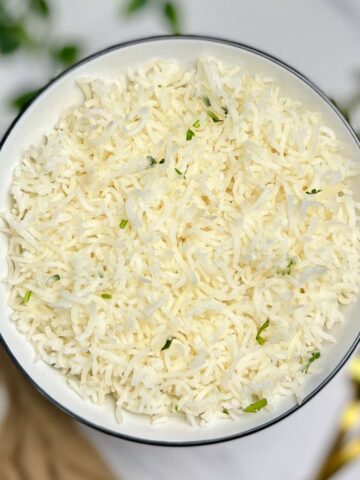
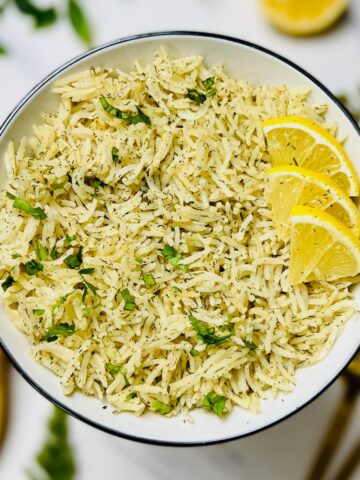
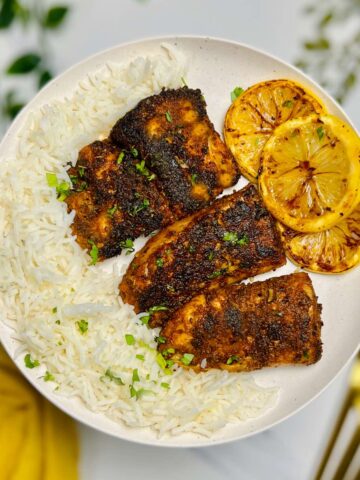
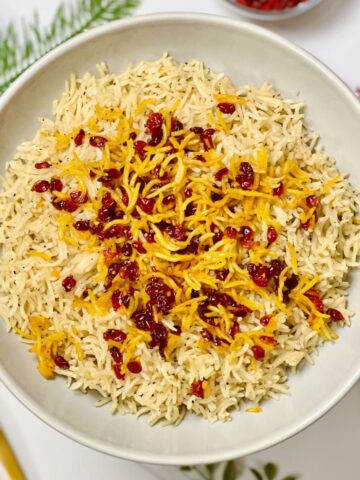
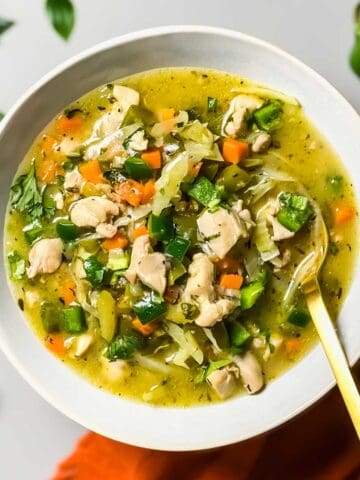
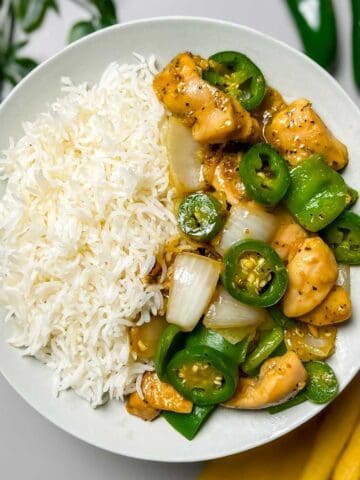
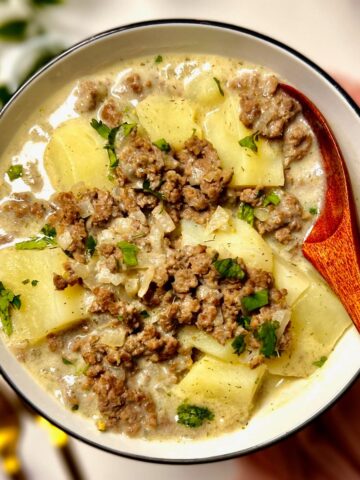
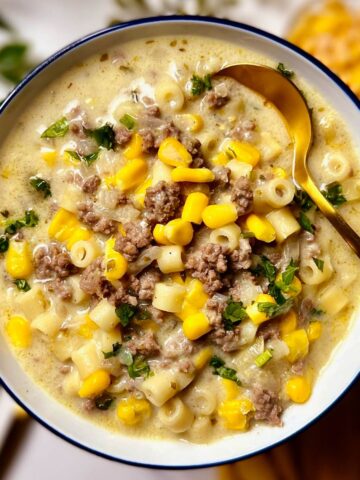
Shireen
will definitely try it
Nelo
Thank you for your comment, Shireen! I'm excited to hear that you're planning to try out this dish. Let me know how it turns out for you!
H Ali
I gave this a recipe a shot and it really is absolutely amazing! Thank you so much for sharing. It was simple to follow, tasted great, and looked impressive! What more could one want 😀
I paired it with an eggplant yogurt dip and the flavours complemented each other very well.
Looking forward to trying more recipes from your blog!
Nelo
Hey Hiba! I'm absolutely thrilled to hear that you loved the recipe and found it easy to follow. Your pairing with the eggplant yogurt dip sounds fantastic, and I'm so glad the flavors complemented each other so well. That's the ultimate goal: delicious, impressive dishes that are fun to make! 😊
Thank you for your kind words, and I can't wait for you to try more recipes from the blog. Continue to share your experiences, and if you ever have any questions or suggestions, feel free to reach out.
Rahim
This looks amazing. Is it a good dish for Navroz?
Nelo
Absolutely! Zereshk polo ba morgh is a perfect addition to any Navroz/Nowruz celebration. Thanks for your comment and happy cooking!